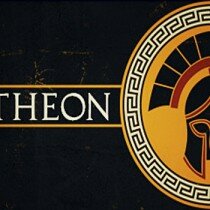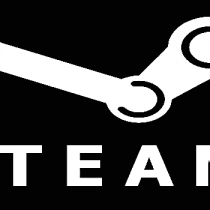As I sat down to write this piece, I initially planned to write this as a straight retrospective piece on the first destruction derby game, reflecting on the game as a whole and reminiscing a bit about an old favourite. I mean, everyone will have heard about Destruction derby right? It was a big thing when it came out during the PlayStation era and was, for a while, a major title.
But that’s the thing, it was the PlayStation era and that’s 4 consoles ago, generationally. While the PlayStation era might not feel like that long ago to me, in reality it was aaagggessss ago. The console came out in 1995; nearly 19 years ago. Wow, that’s a reality check; Destruction Derby is now old enough to drink legally in the UK…
Suffice to say that, while I remember it and at 28 I’m, by no means even close to being considered middle-aged (hell I barely qualify as an adult depending on who you ask!) 18 years is long enough for a great many of our readers to have never heard of.
Right then, surely the later entries of the series will at least vindicate my assertion that everyone will have heard of the Destruction Derby series? Destruction Derby Arenas was the last game in the series and, while it was a bit… rubbish… it at least continued the name right? So when did that come out?
2004?? Ah…ok then…
Tell me that doesn’t look fun…So then, Destruction Derby…
Destruction Derby was released, as we’ve established, in 1995 by Psygnosis (after being developed by Reflections Interactive) as part of the first wave of PlayStation games. Indeed, Psygnosis were rather prolific in their racing/driving games and were also responsible for Wipeout, which I covered previously.
The game, as you may guess from the name, tasks the player with competing in stock car races, eschewing the traditional jockeying for position, lap times and overtaking lanes for all out violent destruction. Starting to see why it was so good yet? Pretty much anything went when it came to battling for position in the game, with players actively encouraged to bash, smash and crash competitors off the track in a bid to finish first. While hardly endowed with finesse, subtlety or, admittedly, much variety, the stock car race mode was certainly entertaining.
To add a layer of tactical consideration and some level of realism, the cars had a level of destructibility, with areas of the car having a finite limit to the damage they could absorb before your car broke down. This was represented by an image of your car on the HUD with various parts that would change colour progressively from green to red as you took damage, finally changing to black when the limit was reached. Along with the progression of damage levels, the vehicle became more visually damaged, which was something new to players at the time and drew a lot of attention.
While the stock car racing was the more extensive aspect of the game, the second, eponymous, Destruction Derby mode was the one that really gained the most favour with the fans. This mode placed the cars in a large circular arena, inspiringly named ‘The Bowl’ with the target of wrecking the most cars before everyone was damaged beyond repair. This mode, while consisting of a single track and little to no variety was the standout aspect of the game and pretty much the reason the game gained the following it did. The was also a Wreckin’ Racing mode, which took the stock car mode and added the awarding of points for wrecking other cars, but that was rather hit or miss compared to the guaranteed action of the main Derby mode.
Following on from the success of the first game, its sequel, Destruction Derby 2 arrived hot on its heels the following year. Differing little from its predecessor, Destruction Derby 2 essentially offered more of the same. Basically, for a review of the 2nd game, just re-read the above paragraphs and add a 2 to the name. Everything from the race modes to the mechanics was the same. The main difference from a race perspective was the addition of several jumps on various tracks, which delivered even more carnage to proceedings.
Wreckin’ Mode – like racking, but better.The reception for the game was on a similar level to that of its predecessor, though on a slightly lower trajectory, most likely due to the aforementioned lack of any real progression in gameplay.
This was not the case for the slightly belated sequel, Destruction Derby Raw. Released in 2000, the game was the first to be developed by a different studio, being taken up, as it was, by Studio 33.
Graphically the game was a step up, as you would expect, but the main change was in the development of the game modes. The existing modes were, in the main, repurposed, with only stock car racing being omitted. Wrecking Racing takes its place as the main race mode, retaining the same format as its predecessor, with a greatly-expanded quota of 25 tracks and 19 competitors. Smash 4 $ was a career mode, in which a player purchased and upgraded vehicles by earning money from in-race challenges. The previously simple Destruction Derby mode returned, but with much more variety, with a series of tracks and new game modes, which can be split into 2 categories, team events and solo challenges. The solo challenges were Armageddon, which tasked the player with surviving as long as possible, Vampyre; where players steal points from their opponent when they hit them, Skyscraper; a standard Derby mode, but with the ability to push cars off the edges of the track and Classic Mode, which remained the same as previous years. The team events were Assault; which tasked players with protecting a CPU-controlled partner car and Pass Da Bomb, where players had to hit an opponent to pass a bomb to them and the player holding the bomb when it went off was eliminated.
The game itself was relatively well-received, with average reviews at the time, though significantly down on previous iterations, mostly down to the lack of refined controls and, again, lack of major gaming variety.
Again, a 4 year delay occurred before the next, and final, game in the series arrived in the form of Destruction Derby: Arenas. Still developed by Studio 33, Arenas was quite a deviation in theme from the previous titles. The overall purpose remained the same, but the presentation was very different, shifting away from the realism of the previous titles to a more arcade experience. The game was poorly received, with many citing the cartoon-like stylings and rather outlandish characters. Indeed, the very fact that the game had characters at all was a huge change in style, one that put many players off.
The overall reaction to the game sounded the death knell for the series and Arenas proved to be the last Destruction Derby game to be released to date. Studio 33 were bought out by EA in 2003 and became EA North West and the Destruction Derby name disappeared from the industry, though similar games such as Empire Interactive’s Flatout continue its legacy.
Destruction Derby wasn’t big and it certainly wasn’t clever, but what it was, was damn good fun and the fact that the last version of note to appear was over 13 years ago means that few younger gamers will have ever had the chance to play such a brilliantly joyous game.
If ever there was a franchise in gaming that is ripe for a revival its Destruction Derby… so long as they don’t mess about with the formula too much.
Now if you’ll excuse me, I’m off to listen to some Steppenwolf and get some pixelated smashing on.
© 2014, zero1gaming.com. All rights reserved. On republishing this article your must provide a link to this original post
About Paul Izod
Paul Izod is a lifelong gamer. Since he was old enough to tap at his Dad's PC's keyboard he's been a gamer. Dedicated and often opinionated, you can be sure he'll always have something interesting to say about the subject at hand. Find him on Twitter at or or email him at
•




